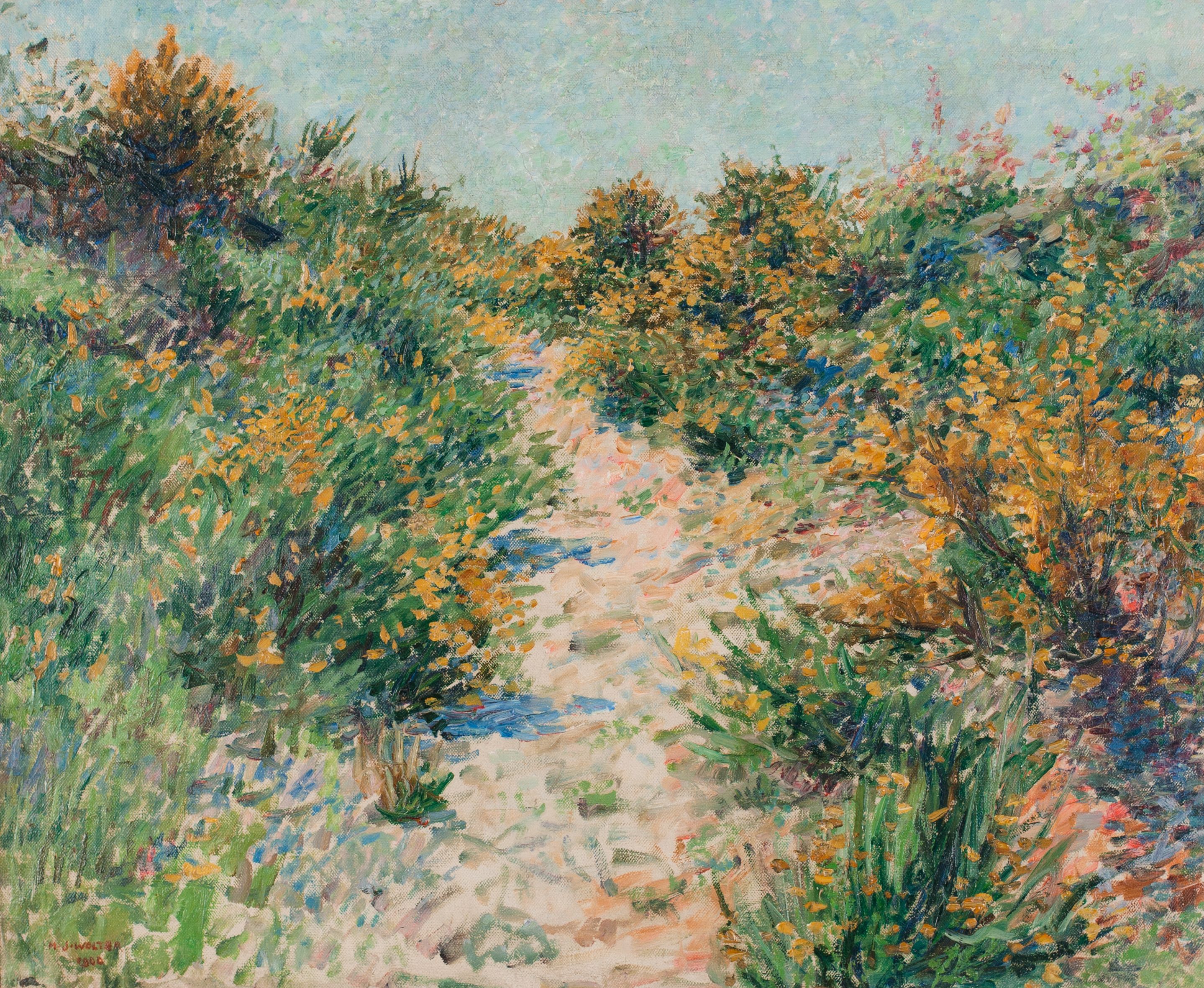H.J. (HENDRIK JAN) WOLTER
Artists
Biography
H.J. (HENDRIK JAN) WOLTER
1873 Amsterdam - 1952 Amersfoort
Hendrik Jan Wolter painted mostly impressionist and naturalistic cityscapes. He was educated in Antwerp and lived for a long time in Het Gooi, where he belonged to the artistic circle around Hotel Hamdorff in Laren, such as Jan Sluijters, Co Breman, Ferdinand Hart Nibbrig. He exhibited regularly and was a (board) member of several societies. From 1914 he lived in Amsterdam. Even though he was aware of the various new developments and movements that succeeded each other after 1914, Wolter did not participate in them. In 1924 Wolter became a professor at the Rijksacademie in Amsterdam. He was known as a teacher who valued tradition but also recognized new movements. During his lifetime, he traveled extensively, painting landscapes and cityscapes on his travels. In 1938, Wolter returned to Laren. He died over there in 1952. Did Wolter need Amsterdam and the Amstel to get more magic, more play, more finesse in his 'light'? It seems so, when you see "the Morning on the Amstel" and "the Afternoon". In both the painting is full of light. This is how Albert Plasschaert wrote about the artist.
Wolter was born in Amsterdam, but moved with his family to Amersfoort in 1885, where his father owned an engineering firm. He went to high school and was admitted as a student to the Académie des Beaux Arts in Antwerp in 1895. The following year he passed his exams for the Institut Supérieur, where he was granted his own studio. The award of a Royal Grant allowed him to continue his studies in Antwerp for three years. After further training in Paris, where he studied mainly the impressionists around Alfred Sisley (1840-1899), he returned to the Netherlands in 1899 and set up his own studio in Leusden. Here he painted mostly figurative subjects. With his wife Koosje van Hoorn, Wolter moved to Laren in Het Gooi in 1904, where he worked mostly en plein air. He alternated his Gooi subjects with river scenes. Water continued to play an important role in his work ever since. In addition, the artist was fascinated by the atmosphere of the town and its lively harbor. This was the reason why Wolter moved from picturesque Laren to Amsteldijk 47 in Amsterdam in 1914, where he had his studio on the third floor. He no longer had to sit along the shore. From his third-floor studio window he had a beautiful view of the Amstel River. Wolter was immediately captivated by what he saw: the Ceintuurbaan bridge, across the water the student union's boathouse and behind it the large Amstel hotel. In the distance, a shadow of Carré and the Magere Brug could still be seen.
From his studio, Wolter painted several "Amstel canvases. He was intrigued by the light and by the mists on the water, which changed every moment of the day. In the morning everything was still shrouded in a gray haze, but when the sun broke through and set the buildings in a warm glow, those warm hues against a clear blue sky came out sparkling. If the weather remained misty, the moisture-saturated atmosphere enveloped the cityscape in a bluish haze of delicate pastel colors. In De Groene, Plasschaert wrote: "It is certain that the city makes these finer, and internalizes them as far as possible. The latter was necessary. He lacked it in order to get more out of skill alone. Certainly he lacked it of late, when he adopted luminism as truth. But whatever, nothing applies without the Dream. And still it is not strong in this work. But there is tenderness, more than before, in the views of the Amstel river seen from Wolter's house. Wolter regularly traveled abroad, where he was inspired by various picturesque port towns.
Thus, between 1908 and 1914, he visited the fishing town of Polperro in Cornwall and went to the Thames in London. Even after Wolter was appointed professor at the National Academy in 1924, he continued to travel, seeking the water each time. The sparkle of light on the rivers and the sea enchanted him. Many of Wolter's paintings are characterized by a tight composition, often almost photographical in conception, a strong use of color, showing light and dark contrasts and tingling sunlight on the water very well, an excellent skill of métier. He painted both in a classical manner and in a divisionist technique à la Théo Van Rysselberghe (1862-1926) and Georges Lemmen (1865-1916), but was at the same time a skilled draughtsman and watercolorist. This did not escape the critics of his time either, and before 1920 he was usually mentioned in the same breath as such important modern painters as Jan Sluijters (1881-1957), Jan Toorop (1858-1928) and Leo Gestel (1881-1941). Consequently, he spent several summers as a guest of Toorop in Domburg and participated in exhibitions on the dune.
1 results sorted by newest. Showing results 1 - 1.
